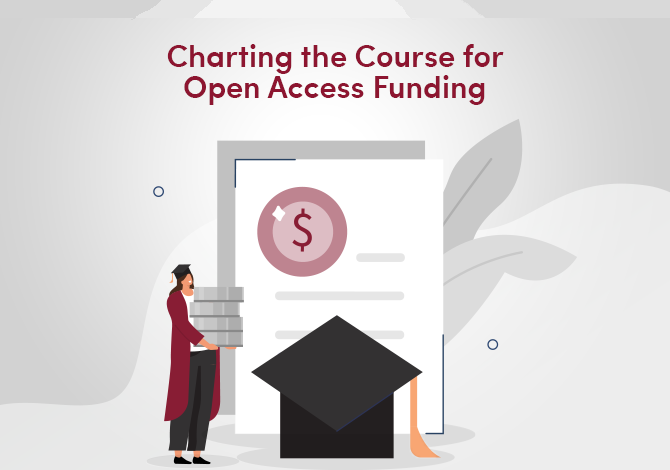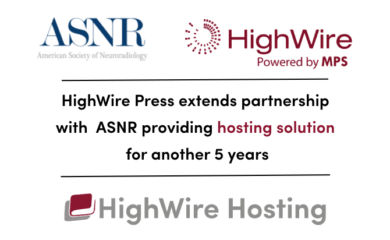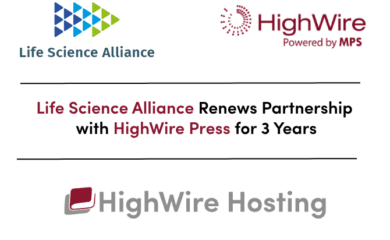In a recent OASPA webinar, sponsored by organizations such as ASAPBio, brought together a diverse group of over 644 registrants from 60 countries, including academic librarians, publishers, and academics. The webinar delved into the evolution of scholarly communication, particularly focusing on the role of preprints and open peer review.
The webinar, chaired by Jonny Coates of ASAPbio, featured panelists including Sara Monaco from Review Commons, Thomas Guillemaud from Peer Community In, Lesley Anson from Science Colab, Stefano M. Bertozzi from Rapid Reviews, and Daniela Saderi from PREreview. Their diverse backgrounds provided a multifaceted perspective on the integration of preprints within the scholarly communication system and the subsequent implications for Open Access funding.
The Current State of Open Access:
Despite the digital revolution that has transformed access to information, academic researchers find themselves navigating a publication process that is not only becoming more complex but also lengthier. This trend was highlighted in the OASPA webinar, where it was noted that the time to a manuscript’s first decision has extended significantly since the 1970s, with each subsequent year only adding to the delay.
The complexity of publications has notably increased between 1984 to 2014, with journals such as Cell, Nature, and the Journal of Cell Biology imposing more detailed requirements for scientific articles. This increased complexity is further compounded by the advent of supplemental material, which often exceeds the main content of the articles, placing additional burdens on researchers and the peer review system.
The financial implications of these trends are staggering, with the global cost of the peer review process estimated at around $6 billion. This hefty price tag raises critical questions about the sustainability of the current system and the urgent need for more cost-effective models of scholarly communication. These costs are not merely monetary but also involve the valuable time and effort of researchers, reviewers, and editors, all of which could be channeled more efficiently.
Progressive Models in Open Access:
Building on the contemporary challenges faced in scholarly communication, the OASPA webinar spotlighted a variety of innovative open access models that promise to refine and enhance the dissemination of research. One such progressive model is the “journal-agnostic” peer review, which eschews the traditional journal hierarchy and focuses purely on the scientific merit of the work. This model has been embraced by platforms like Review Commons, which partners with a consortium of journals agreeing to consider reviews without reinitiating the peer review process, potentially reducing redundancy and accelerating publication timelines.
This approach not only streamlines the process but also supports a more equitable and inclusive publishing landscape. Another model, presented by Peer Community In (PCI), emphasizes the importance of community endorsement and peer recommendation of preprints, enabling a more democratized form of research validation. PCI’s open-access journal allows for direct publication without additional peer review, offering an expedited path to publication while maintaining peer review integrity.
The webinar also highlighted the increasing recognition of preprints as legitimate scientific contributions, evidenced by the growing number of doctoral schools and funding bodies that regard preprints as valuable research outputs. Such trends underscore a shift towards a more dynamic and responsive scholarly ecosystem where the value of research is not solely determined by the journal of publication but by its intrinsic scientific contribution and the constructive peer feedback it garners.
The effectiveness of these models lies in their capacity to reconcile the need for rigorous peer review with the urgency of open access, enabling a swifter exchange of ideas and findings within the scientific community. By reducing barriers to publication and fostering a collaborative review process, these models are poised to significantly impact the adoption of open access across various disciplines.
Financial Challenges and Innovative Solutions:
Panelists raised critical sustainability concerns, emphasizing the necessity for open access initiatives to develop viable long-term economic strategies. A prominent challenge is devising a model that upholds the principles of open access while ensuring financial viability for publishers and affordability for researchers.
One innovative solution discussed is the idea of a minimal charging model, as suggested by initiatives like Science Colab, which aims to transition to a service-based charge that would be as low as possible. This fee would not be a barrier to entry but rather a means to remunerate curators and reviewers for their contributions, recognizing their efforts in enhancing the quality of scholarly communication.
Another approach is to leverage support from research institutions, libraries, and national research organizations, as seen with Peer Community In (PCI). This consortial support system allows for a collective pooling of resources, ensuring a steady budget that can sustain the platform for years to come without imposing direct charges on authors.
The webinar also touched on the importance of transparency in charging models. Open access platforms are exploring ways to publicly disclose how funds are allocated, ensuring that any charges applied are directly reinvested into improving the service and supporting the community.
Financial Challenges and Innovative Solutions:
Sustainability concerns were candidly addressed by the panelists. They underscored the critical need for OA initiatives to craft enduring and resilient financial frameworks that support the open dissemination of research while also remaining economically viable.
Panelists discussed different charging models that OA platforms might employ, carefully considering their implications for both researchers and publishers. The discussions revolved around creating a charging model that is as inclusive as possible. For example, the model presented by Science Colab plans for minimal service charges aimed at compensating curators and reviewers fairly, reflecting the value of their expertise without placing undue financial burdens on authors.
Moreover, the idea of consortial funding support, as adopted by Peer Community In (PCI), was highlighted as a promising avenue. This approach relies on the collective financial backing from a network of academic libraries, research institutions, and national organizations, establishing a sustainable budget that can support the platform for the foreseeable future without directly charging authors.
Panelists also emphasized the importance of transparency in financial models for OA services. By clearly outlining how funds are utilized, OA platforms can ensure that any costs incurred by authors or institutions are reinvested into the community, enhancing the service and benefiting all stakeholders involved.
Establishing Trust and Credibility
The panelists, representing various OA initiatives, underscored the need for transparent practices and robust conflict of interest management. This transparency isn’t just procedural; it’s fundamental to the ethos of OA, ensuring that research is judged on its merits rather than on ancillary factors.
In their discussions, the panelists highlighted the significance of openly available, signed reports and editorial endorsements. These practices not only enhance the credibility of OA publications but also foster a culture of accountability and integrity in the scholarly communication process. For instance, Sarah Monaco from Review Commons mentioned the practice of providing detailed, signed feedback reports, which not only validates the research but also offers constructive criticism aimed at improving the overall quality of scholarly work.
Future Trends and Overcoming Obstacles
Key challenges include the standardization of processes, the recognition of OA publications in academic evaluations, and the need for more robust infrastructure to support OA models. The experts, drawing from their diverse experiences, proposed a range of solutions and best practices aimed at fortifying the OA framework.
One such solution, as discussed by Lesley Anson from Science Colab, involves incorporating Journal clubs into the peer review process, enriching the feedback mechanism, and enhancing the rigor of published research. Panelists also foresaw an increasing trend towards more community-driven OA models, where researchers play a more active role in the peer review and dissemination of their work, as seen in the initiatives by Peer Community In and PREreview.
Conclusion – A Vision for Open Access
The webinar painted a picture of a collaborative, inclusive, and equitable future for OA publishing. The roles and responsibilities of academic institutions and publishers in this envisioned future are manifold. They range from fostering supportive policies and infrastructure to nurturing a culture that values and recognizes OA contributions in academic evaluations and research dissemination.
This future also hinges on developing sustainable financial models that balance affordability with the quality and integrity of OA publishing. The ideas discussed, from minimal charging models to consortial funding support, reflect a commitment to keeping OA inclusive and accessible, while also ensuring that it remains a viable and robust avenue for scholarly communication.



